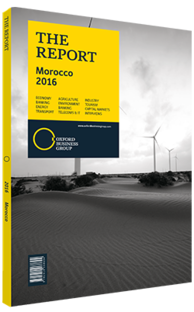Morocco reforms pension system and generates debate among sector players
The national pension system is undergoing a change after both houses of parliament approved reforms in mid-2016 that will see the retirement age for public sector workers rise in order to keep the main pension fund on an even footing. Recent regulatory reforms in the insurance industry will also increase opportunities to sell complementary products for insurance firms, though sector figures say they do not anticipate becoming major pension providers.
Pension System
The kingdom’s pension system is dominated by three government-run funds: the Caisse Marocaine des Retraites (CMR), which provides coverage for full-time government employees; the Regime Collectif d’Allocation de Retraite; which covers government workers not covered by the CMR; and the Caisse Nationale de Sécurité Sociale, which covers private sector employees. There is a fourth fund, the Caisse Interprofessionelle Marocaine de Retraite, which is independent from the government and provides optional complementary pension coverage to private sector workers. Large numbers of Moroccan workers, such as many self-employed professionals and people working in the informal sector, currently lack any sort of pension coverage.
Reforms
The government has been working in recent years on reform of the system for public sector workers covered by the CMR, which it says is unsustainable in its current form. The IMF also described the need to reform the system as “urgent” in its 2015 Article IV consultation for the country. Due to factors such as longer life expectancy and the fact that more government employees now retire every year than enter into public employment, the government predicts that the CMR will run a deficit of around Dh6bn (€550.1m) in 2016. Speaking to parliament in late 2015, Abdelilah Benkirane, Morocco’s head of government, said that without reform the state would have to double its CMR contributions by 2019 to enable it to continue to meet its liabilities beyond 2022.
The changes will see the retirement age for CMR beneficiaries rise from 60 to 63 by 2022, as well as a gradual increase in contributions to the fund by workers and government from 10% of workers’ salaries to 14%. Annual pension payments will also effectively be reduced to 2% of an employee’s salary for each year worked, based on their average salary during their last eight years of employment, from 2.5% of final salary currently – though the minimum pension will be raised from Dh1000 (€91.69) per month previously to Dh1500 (€138), applicable after at least 10 years of employment, which is up from five previously.
Trades unions have opposed the plans and held a number of strikes and protests against these changes. Opposition parties and union representatives also held up the passage of the legislation through a parliamentary committee in the Chamber of Councillors (the upper house of parliament) for several months. However, the chamber finally approved the legislation at the end of June 2016. One month later in July the legislation was approved by the Chamber of Representatives (lower house). However, there is still some debate over the law and unions have vowed to take action to try to prevent the changes.
Regulatory Change
Other changes to the pensions system are also afoot, with new insurance sector regulator the Social Security Regulatory Authority having taken on a new function not exercised by its predecessor, the Insurance and Social Security Directorate, namely the oversight of public pension funds by, for example, verifying their actuarial calculations and examining their long-term sustainability. The law that created the new body also allows for the creation of private pension funds, which the body will also regulate. However, Bachir Baddou, director-general of industry representative body the Moroccan Federation of Insurance and Reinsurance Companies, told OBG that reform of the pension system would likely have a limited overall impact on the insurance market.
You have reached the limit of premium articles you can view for free.
Choose from the options below to purchase print or digital editions of our Reports. You can also purchase a website subscription giving you unlimited access to all of our Reports online for 12 months.
If you have already purchased this Report or have a website subscription, please login to continue.

